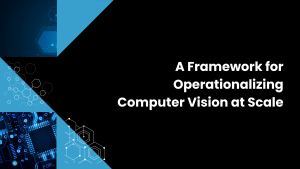With David Floyer
Please see the revised crowdsourced supercloud definition here for the most up to date framework.
Over the past several years we’ve been observing a trend whereby platform providers envision capabilities that span multiple clouds delivering an identical developer and user experience. Until recently this vision has been aspirational but we’re beginning to see examples of real-world implementations taking shape.
We used the term “supercloud” to describe this capability to convey the concept. We explicitly want to go beyond cloud compatibility – i.e. a stack that runs on many different clouds, including on-prem. Rather we wanted to define a capability that spans multiple clouds with a singular experience that adds value above and beyond anything customers can receive from a single cloud.
We’ve been challenged to better define supercloud and take a run at tightening up the definition here:
What is a Supercloud?
Supercloud describes an architecture that taps the underlying services & primitives of hyperscale and other clouds to deliver additional value above and beyond what’s available from a single public cloud provider. A supercloud delivers capabilities through software, consumed as services, and must span multiple cloud platforms, inclusive of on-prem clouds and edge installations.
A supercloud is an abstraction layer that can hide the underlying complexity of various clouds but at the same time is capable of leveraging these capabilities to add value on top of native cloud primitives. A supercloud may allow developers to tap primitives and native APIs if desired via the PaaS layer. However, the logical developer output of the PaaS layer in a supercloud is functionally identical across all supported clouds.
In essence, we believe over time, all superclouds will include such a PaaS layer that we refer to as “SuperPaaS,” allowing developers to write once and publish anywhere. Container orchestration platforms are logical building blocks for superPaaS. However, the superPaaS will require additional capabilities to handle recovery and other cross-cloud functionality across disparate cloud platforms. Wikibon regards this as a significant business opportunity for software enterprises that don’t operate a hyperscale cloud platform.
A supercloud must include multiple clouds and at least one hyperscale cloud– otherwise, it’s not scalable to the degree that it would warrant a moniker of “super.” The attributes and benefits of supercloud are:
- Access to all/most cloud platforms and applicable primitives, which over time will increase in number and become more specialized.
- All cloud platforms conform to a set of common standards that are written and tested independently of other cloud platforms and are “air-gapped” from each other. These standards are utilized by developers where the experience across clouds is identical. Users don’t know or care where the code runs.
- Metadata that understands locality and can optimize or avoid data movement (including edge workloads).
- Reduced cost (i.e. the ability to choose a local or specialized cloud that best meets cost, performance, and/or governance requirements).
- Improved security and value add – (e.g. can avoid cloud resources with security issues & restart with data backed up on other clouds…avoids too much dependence on a single cloud and cloud providers knowing too much about your data, code, customers, and business volume).
This leads to:
- Improved automation across clouds.
- Improved application functionality, especially for real-time applications.
- Improved availability (e.g., avoids total shutdown of a single cloud platform).
- Be a better international player by deploying on local cloud vendor(s).
- The air gap between clouds with multiple architectures reduces the risk/scope of cyber attacks.
- Reduced impact of single telecom failures.
- Allows access to unique clouds via APIs – (e.g. mainframe clouds, Oracle clouds) to avoid conversion of existing mission-critical systems.
- Reduced budgets and better protection from opportunistic cloud price hikes.
- Reduced risk of a cloud platform appropriating your data, code, or customers to provide their own service.
In summary, we believe that significant opportunities exist for companies to digitally transform leveraging hyperscale infrastructure. These opportunities are not only open to traditional technology hardware and software companies but rather opportunistic firms across all industries can provide superclouds for their respective domains.
Please refer to: Answering the top 10 questions about supercloud for additional information.



